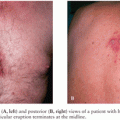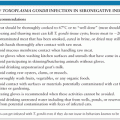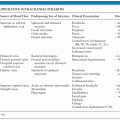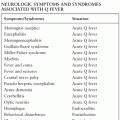INTRODUCTION: APPROACH TO THE PATIENT WITH CENTRAL NERVOUS SYSTEM INFECTION
CHRISTINA M. MARRA, RICHARD J. WHITLEY, AND W. MICHAEL SCHELD
Infections of the central nervous system (CNS) are notable for their diversity. They range from common to rare, acute to chronic, and benign to fatal. Although some are self-limited or are easily cured with modern treatment, others are relentlessly progressive despite treatment or have no known treatment. For the many CNS infections that are treatable, prompt diagnosis and aggressive management afford the best chance of recovery without sequelae.
The clinical hallmarks of CNS infection are fever, headache, and alteration of mental status. Focal neurologic signs may also be evident. Nonetheless, these four symptoms and signs are nonspecific and can also be seen in noninfectious CNS syndromes. To narrow the differential diagnosis, other characteristics must be evaluated. Among these, risk factors for CNS infections are particularly helpful. Physical examination may also yield information that provides clues to the etiology of a given infection. An approach to the diagnosis of CNS infections is shown in Figure 1.1.

RISK FACTORS FOR CENTRAL NERVOUS SYSTEM INFECTIONS
Many infections of the CNS are geographically distributed or occur seasonally. Therefore, a thorough travel history and consideration of the date of onset of illness can provide clues to the etiology. For example, Lyme disease is endemic in the northeastern United States but uncommon in the southwestern states. Similarly, transmission of arborviral encephalitides requires the presence of an insect vector, and thus these illnesses most commonly occur in summer and fall. Certain environments facilitate acquisition and transmission of CNS infections, as exemplified by outbreaks of meningococcal infection in military recruits and college students. Concomitant illnesses such as HIV infection or diabetes, alcoholism, receipt of immunosuppressant medications, or cancer chemotherapy all predispose to specific CNS infections. Similarly, receipt of prophylactic therapies protects against individual CNS infections. For example, primary prophylaxis against Pneumocystis jiroveci pneumonia with trimethoprim-sulfamethoxazole in HIV-infected individuals decreases the risk of CNS toxoplasmosis.
CLUES ON PHYSICAL EXAMINATION
Physical examination in the setting of suspected CNS infection has three purposes: (a) to identify contraindications to lumbar puncture, (b) to identify concomitant sites of infection or pathology that provide clues to the infectious etiology, and (c) to define the site of CNS infection. Depressed level of consciousness, focal neurologic abnormalities, or seizures may indicate a structural CNS abnormality that poses a risk of brain or spinal cord herniation after lumbar puncture. Such findings mandate neuroimaging before lumbar puncture. Identification of concomitant pneumonia, diarrhea, and skin or bone lesions may offer clues to the etiology of infection. Most importantly, findings on neurologic examination allow for identification of the most likely site or sites of infection among cerebrospinal fluid (CSF) space, brain, or spinal cord and allow for a “syndrome recognition” approach to diagnosis, as described below.
Acute Meningitis Syndrome
Stay updated, free articles. Join our Telegram channel

Full access? Get Clinical Tree








